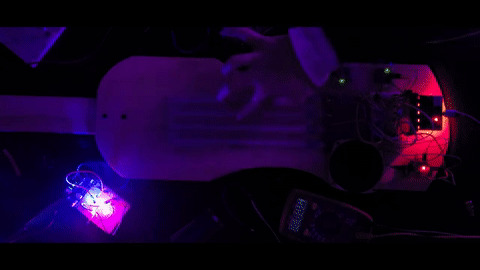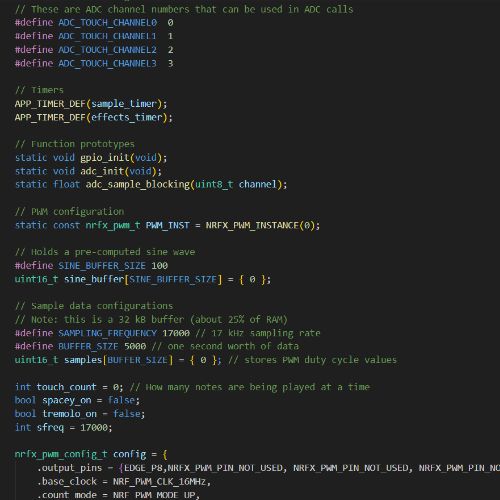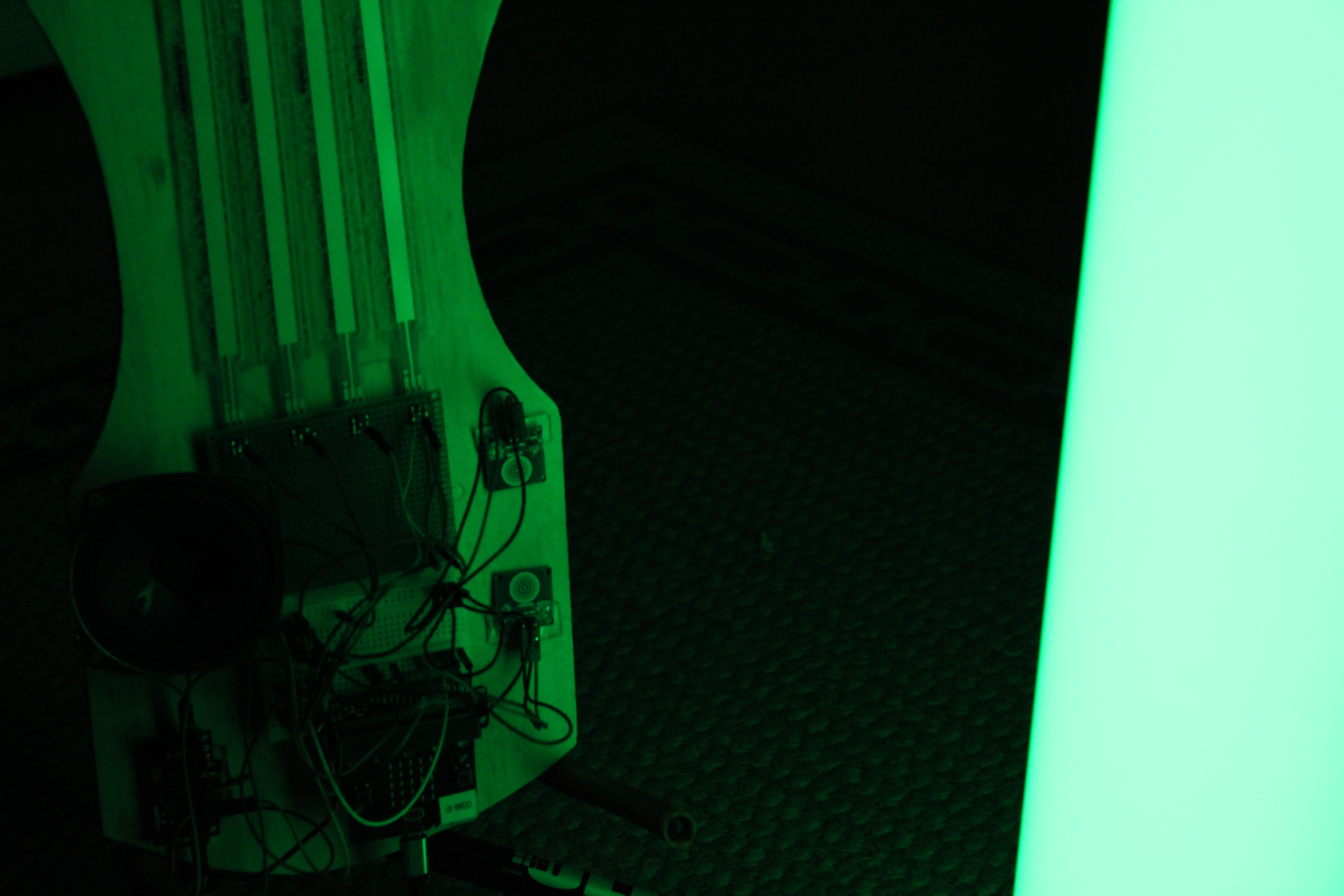Overview
An interesting name, isn’t it? As one who is quite interested in the art of music and the creation of instruments, it was natural to make an embedded system that assumes all aspects of being a musical device. An electric guitar isn’t quite like the electric-electric guitar with one differing aspect: the creation of sound. In an electric guitar, one plucks a metal string to vibrate at a specific frequency, to change the magnetic field of the pickup component, which effectively induces an electromotive force (EMF) creating an electrical signal to be amplified. In essence, this process is more so a mechanical conversion to electrical energy by electromagnetic induction. In the electric-electric guitar, all signals are created internally by the microcontroller of the embedded system. Using embedded C, an electric signal is created computationally through logic and signal processing to then be transduced into an acoustic signal with an external speaker. The guitar mechanical strings are replaced by sensors to actuate a sound wave at a particular frequency by a touch event. Such an instrument allows for the extension of creativity with what one can do and produce whilst playing this guitar, removing the limiting element of mechanical sound creation to digitally being able to create unique sounds and process the signal directly to apply cool effects for a different auditory experience.



